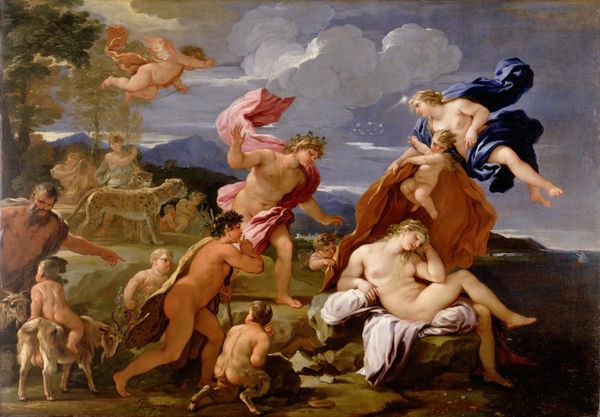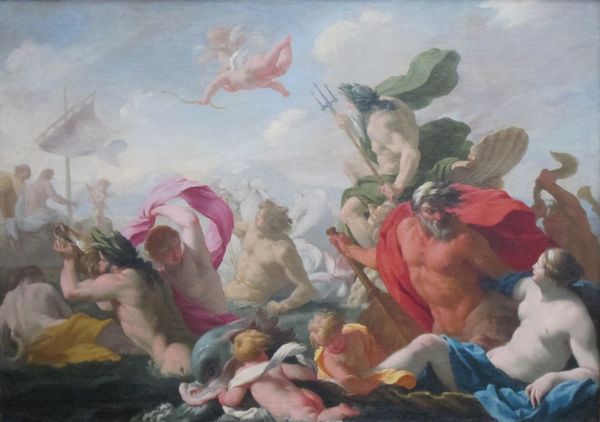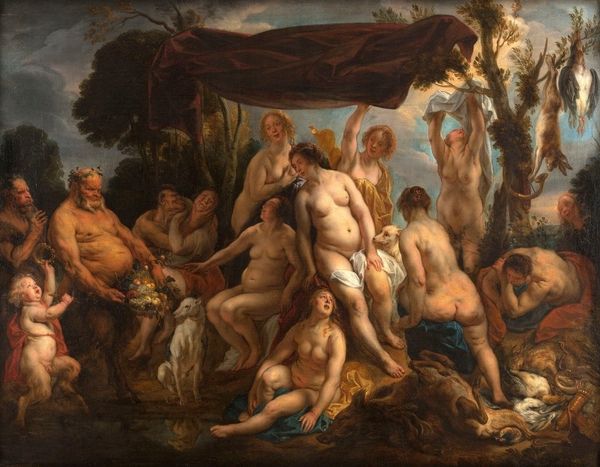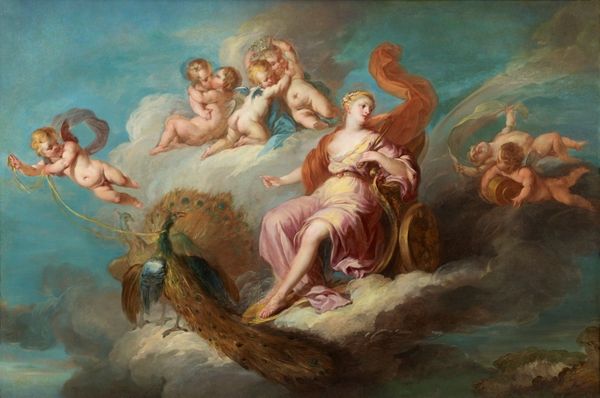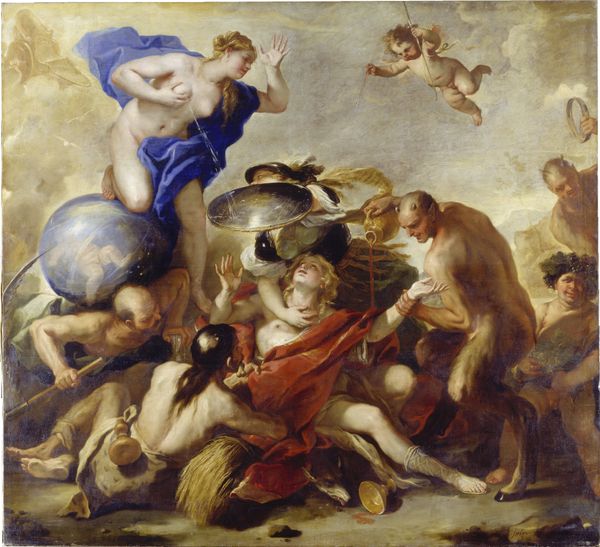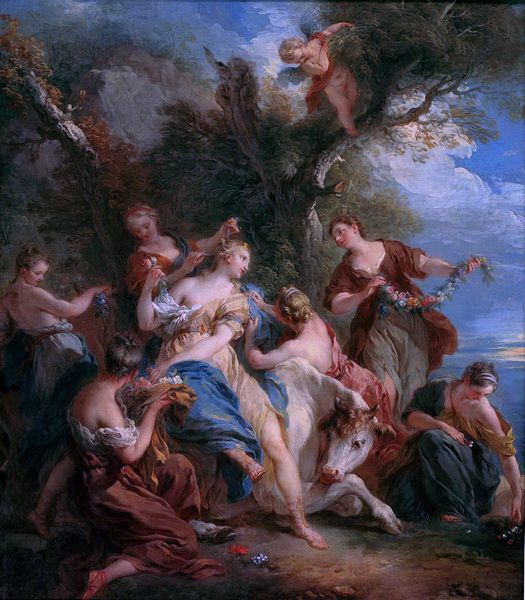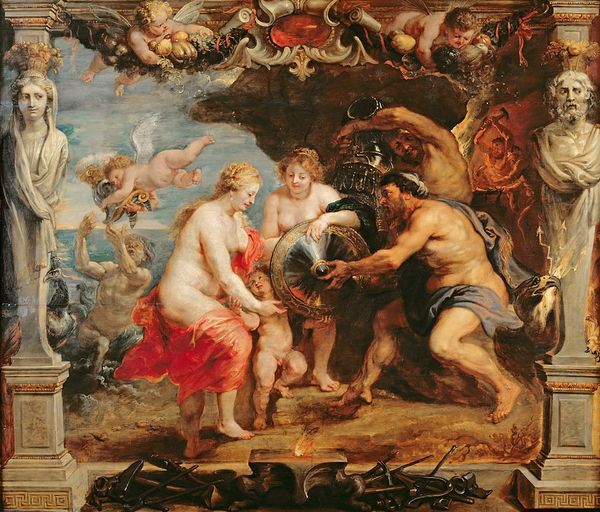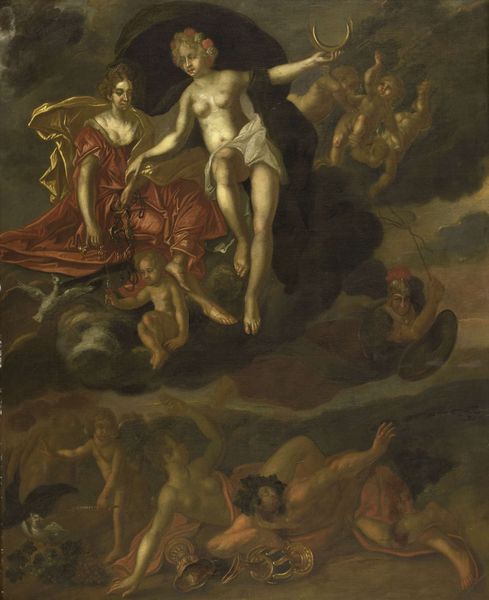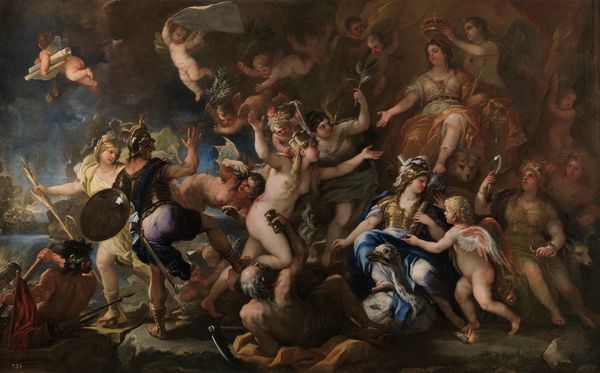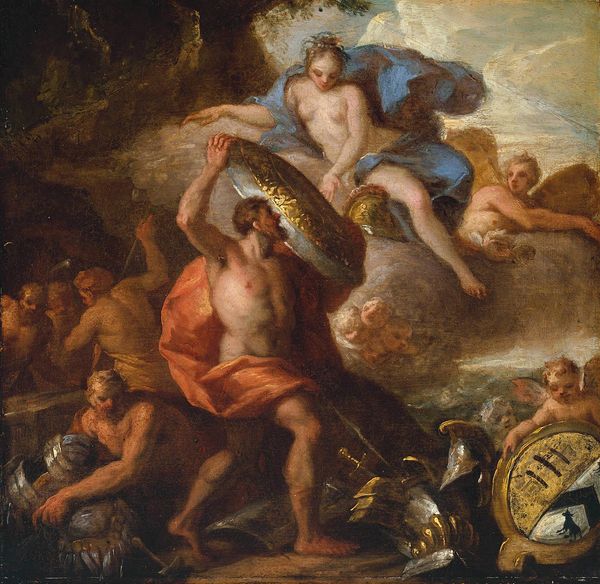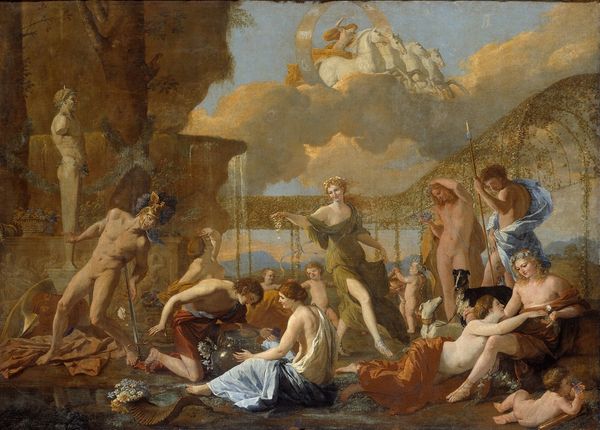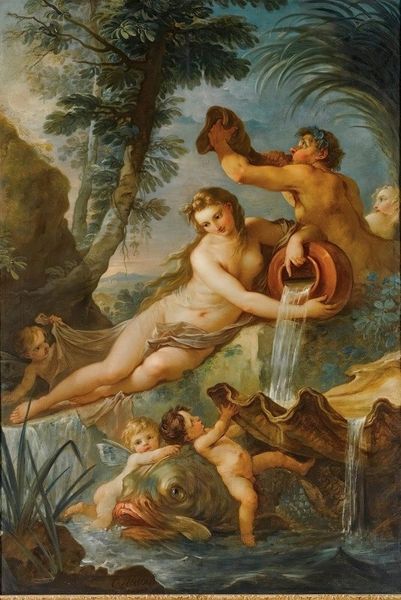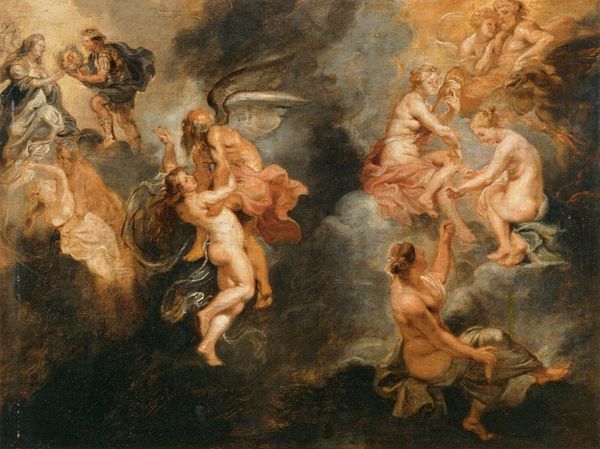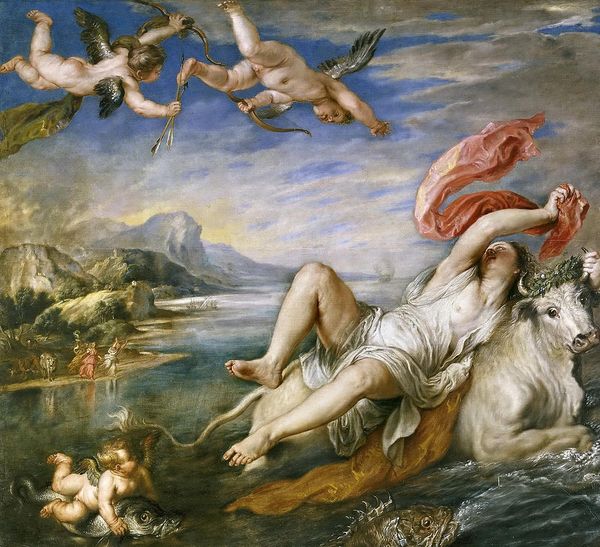
painting, oil-paint
gouache
allegory
painting
oil-paint
oil painting
mythology
watercolour illustration
history-painting
nude
watercolor
rococo
Copyright: Public Domain: Artvee
Editor: So, this is Charles-Joseph Natoire's "Triumph of Amphitrite", painted sometime between 1730 and 1740. It's an oil painting and it feels…joyful? All those cherubs and flowing fabrics create a very dynamic composition. How do you interpret this work? Curator: Indeed. Focusing solely on the pictorial structure, observe the skillful use of diagonal lines – evident in the arrangement of figures and the flow of drapery – to create a sense of movement and energy. Consider how this dynamism is further emphasized by the artist’s chosen palette. Editor: The light pastel colours, right? They really contribute to that airy feeling. Curator: Precisely. The use of pastel colours is paramount. Note also how the figures are arranged across the canvas. Natoire employed asymmetry in the disposition of the figures, creating a dynamic composition. This stands in contrast to, say, the Renaissance predilection for symmetrical arrangements. Editor: So the asymmetry enhances the feeling of motion? Curator: Exactly. Consider also the surface texture – the brushstrokes, seemingly effortless, contribute to the painting’s Rococo character. Does the overall composition evoke particular emotional or aesthetic responses in you? Editor: It's very lighthearted, almost frivolous. The cherubs and sea creatures feel decorative rather than meaningful, like pure aesthetic pleasure. I hadn't really thought about asymmetry before in making a piece "work". Curator: It serves not merely as ornament, but as integral structural element to create, through careful composition and visual language, an affective aesthetic.
Comments
No comments
Be the first to comment and join the conversation on the ultimate creative platform.
